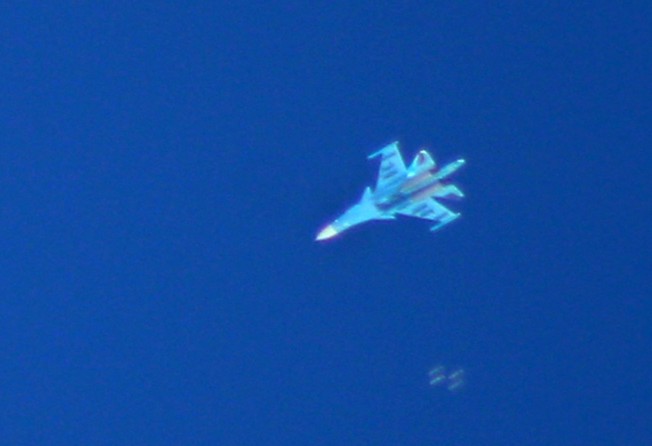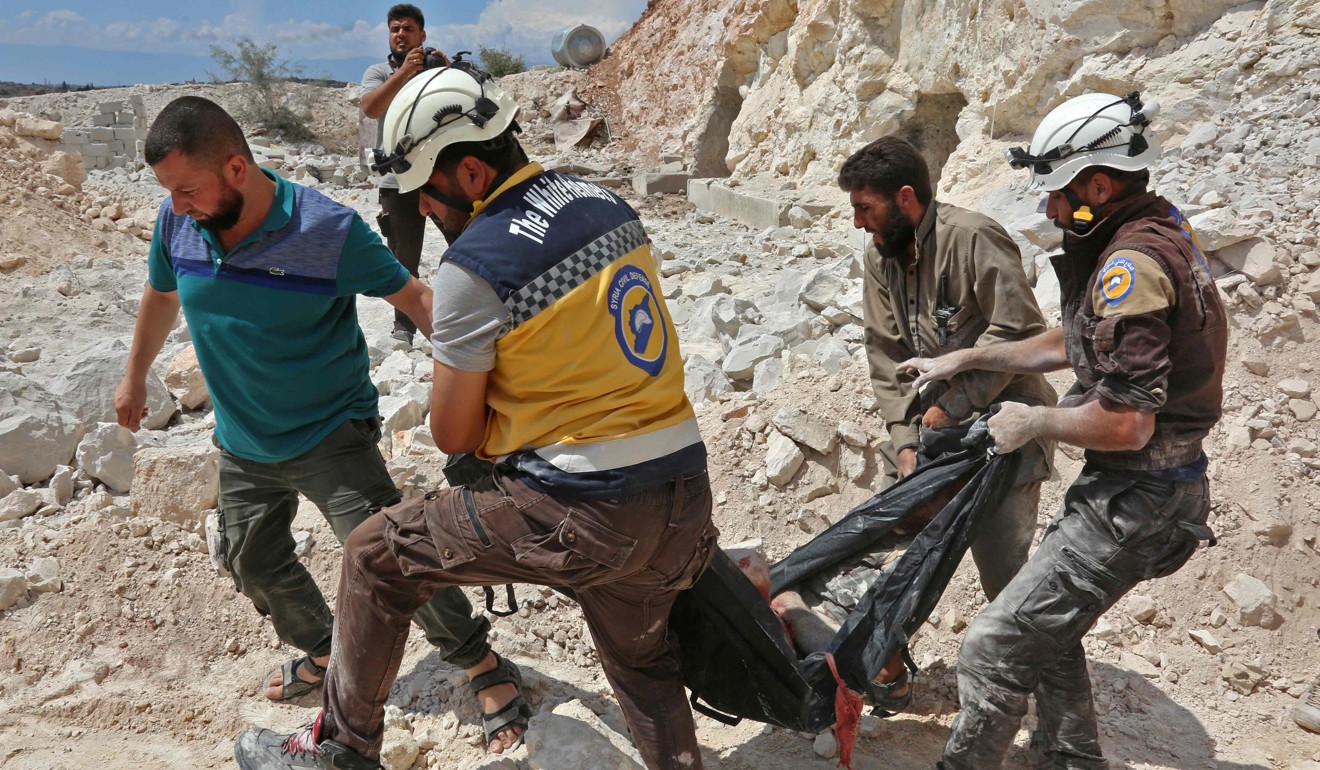US sends 100 extra troops to remote Syria base after Russia threatens attack
Base is used by US special forces to train Syrian fighters who are confronting Islamic State militants

More than 100 US Marines were sent as reinforcements to a remote coalition outpost in southern Syria after Russia threatened to attack militants in the area, the Pentagon said.
The troops were flown by helicopter to the base at At Tanf – a small town near the borders of Syria, Iraq and Jordan. The base is used by US special forces to train Syrian fighters who are confronting Islamic State militants.
Moscow has sent multiple messages to the US in recent days, warning that it and Syrian regime units were planning an attack on what they refer to as “terrorists” near Tanf, US officials said.
The Russian threats may be a way of testing US resolve to keep troops in Syria now that President Bashar al-Assad’s forces, backed by Russian troops and warplanes, have succeeded in defeating rebels everywhere except Idlib province and areas of eastern Syria controlled by the US and its allies.
US military officials bluntly warned Russian and Syria not to go forward with an attack within an almost 50km security zone that the US maintains around Tanf, a key strategic outpost.
“The United States does not seek to fight the Russians, the government of Syria or any groups that may be providing support to Syria in the Syrian civil war,” said Lieutenant Colonel Earl Brown, a spokesman for US Central Command.
“However, the United States will not hesitate to use necessary and proportionate force to defend US, coalition or partner forces.”
Russia is al-Assad’s top international backer; its support, including aircraft, special forces and mercenaries, enabled him to reverse the course of his country’s seven-year civil war, which has killed hundreds of thousands of people and displaced millions more.
Successive Russian-backed campaigns over the last two years have seen the government retake every major opposition bastion, offering fighters who refused to lay down their arms safe passage to Idlib.
The US Central Command said the troops sent to Tanf would conduct a multi-day exercise using live ammunition.
US officials who work on the Syria issue have said in recent days that the administration is now resolved to stay in Syria longer than President Donald Trump previously indicated, to finish the fight against Islamic State but also to see the withdrawal of Iranian fighters.

Previously, Trump said he wanted American troops out of Syria as soon as possible, and has redirected millions of dollars meant to help rebuild Syria to other projects.
Russian warplanes have been carrying out intense air strikes in Syria’s northwest, pounding rebel-held areas in Idlib province and surrounding regions that have become the last sanctuary for the opposition to al-Assad.
Russian military officials first informed the US on September 1 through a special communication channel that they “that they intended to enter the At Tanf deconfliction zone to pursue terrorists,” Brown said.
Pentagon officials said that Russia’s threat to carry out precision strikes suggested it might be contemplating use of air strikes, missiles, long-range artillery or bombardment from Russian naval vessels in the Mediterranean against Tanf.

Such an attack might prompt the US to respond with punishing reprisals using similar weapons, especially if a Russian attack caused casualties to US or its allies, officials said.
Moscow has previously agreed not to enter the zone around Tanf, Brown said.
“We expect the Russians to abide by this agreement.”
Administration officials are at least giving lip service to the need for a stronger diplomatic push, in part because of the competing agendas of numerous factions fighting in the region.
On Friday, for example, the presidents of Iran, Russia and Turkey, all of whom have fighters in Syria, held a summit in Tehran to plot their next moves.
But Turkey’s Recep Tayyip Erdogan, Russia’s Vladimir Putin and Iran’s Hassan Rowhani failed to agree on a ceasefire, apparently dooming any effort to slow an Assad assault on Idlib and the likely devastating toll it would take on several million civilians who live in the area.
Turkey, which has largely backed opposition forces, sought the ceasefire. Putin rejected it, claiming that the possible fate of civilians was being used as a “pretext” to ease pressure on what he called terrorists.
Also Friday, at the United Nations, the Syrian ambassador Bashar al-Jaafari declared his government’s determined to move on rebel-held Idlib to wipe out what he called factions associated with “terrorist groups”.
An attack last February by Russian mercenaries on another US base in eastern Syria was repulsed by the US with ferocious air strikes and artillery barrages, resulting in dozens of Russian casualties. The Russian government denied any role in the attack.